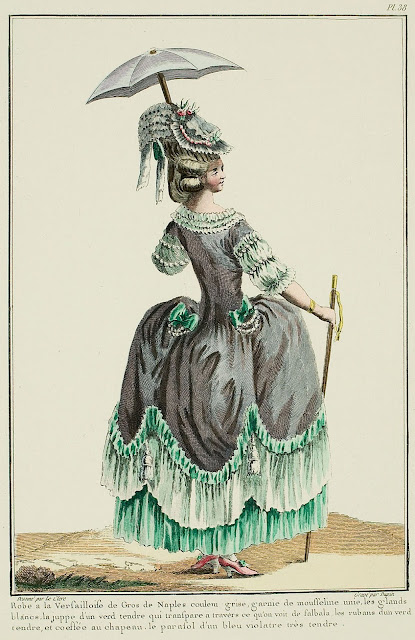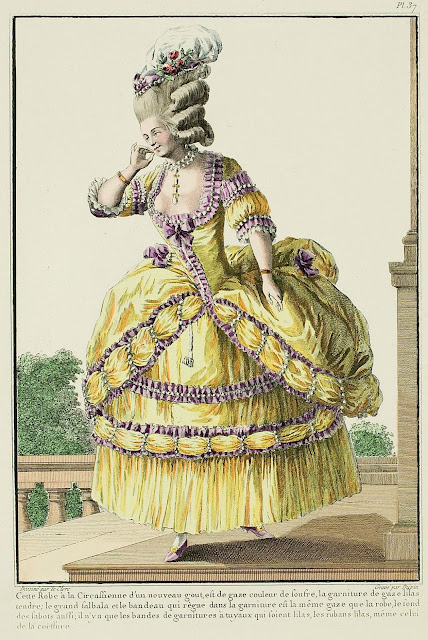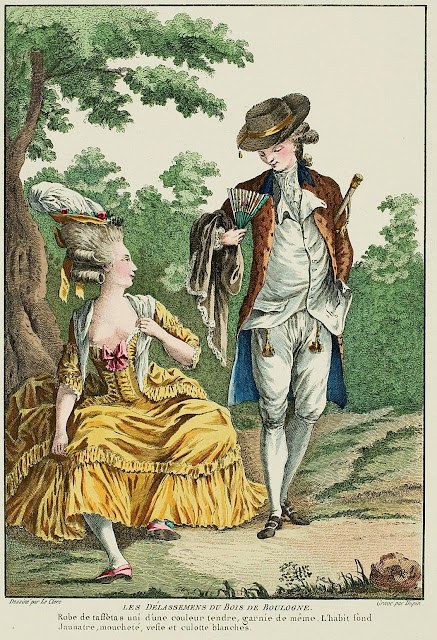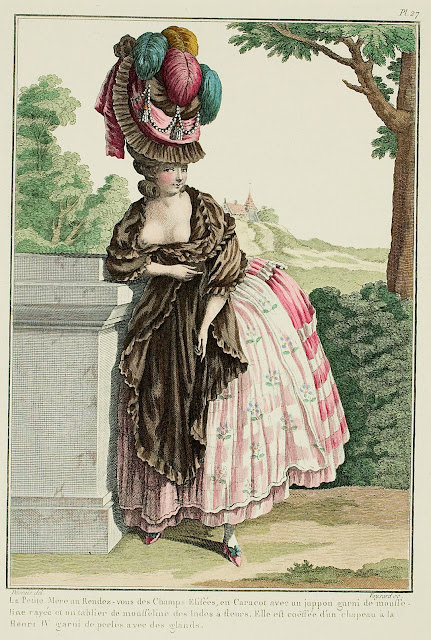Galerie des Modes, 13e Cahier, 3e Figure

Young Lady coiffed à la Dauphine, dressed in a taffeta Robe à la Reine, trimmed au Nouveau Désiré . This Dress was invented by Signore SARRAZIN, costumer to their Royal Highnesses the Princes . (1778) Robe à la Reine : this gown has the double advantage of being able to be worn trailing or pulled up, at the will of the people who are wearing it and at the moment they choose; two drawstrings, placed on two sides, indicated by two bows, and trimmed with two tassels, create this effect; in pulling one tassel, the gown lifts, as it is in the Drawing; in pulling the other, it descends and becomes hanging; this change is made in an instant. The trim, called au nouveau désiré * because it was devised during the pregnancy of a majestic Princess, consists of two bands of spotted ermine, crossing in a mosaic form. One can, in the summer, replace the ermine with bands of gauze, also spotted, or streaked taffeta. The first sleeves are open in the back like dalmatics; they han...












